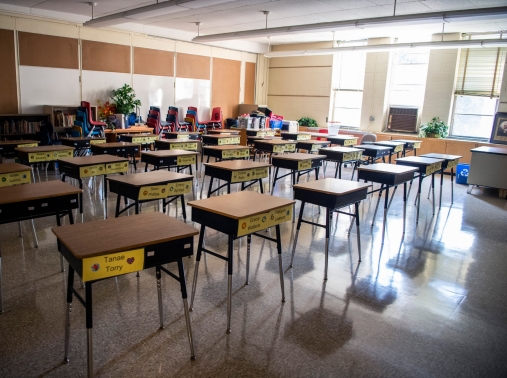|
|
RAND research and commentary on the issues that matter most
|
June 10, 2021
|
|
|
|
|
Photo by NASA and RomoloTavani/Getty Images
|
|
|
|
|
What is China's approach to competition with the United States? And how does China define success in this competition? A new RAND report seeks to answer these questions by positing Beijing's international and defense strategies.
The authors propose that China will aim to establish regional and global primacy by relying on economic prowess and diplomatic maneuvers. The goal: gain a position of advantage from which China cannot be dislodged by the United States.
Notably, China would pursue these goals through peaceful methods and attempt to avoid war with the United States. But that does not rule out the possibility of militarized crises or even limited conflicts, such as proxy wars. Read more »
|

|
|
Photo by Stockcrafter/Getty Images
|
|
The White House recently charged the U.S. intelligence community with redoubling its efforts to determine whether the coronavirus “emerged from human contact with an infected animal or from a laboratory accident.” But there are more than just two scenarios to consider, says RAND's Daniel Gerstein. And regardless of how the virus began to spread, biosafety and biosecurity measures can be taken to minimize the risk of another pandemic.
Read more »
|
|

|
|
An empty classroom at Heather Hills Elementary School in Bowie, MD, August 26, 2020. Photo by Tom Williams/CQ Roll Call/Sipa USA via Reuters
|
|
Last month, RAND surveyed more than 2,000 parents about their willingness to send their children to school in person in the fall. Eighty-four percent said that they planned to have their kids back in the classroom, while 12 percent were unsure. Even after accounting for urban, suburban, or rural locations, Black and Hispanic parents were most hesitant about sending their children back—primarily because of concerns about COVID-19 safety.
Read more »
|
|

|
|
Photo by Andrii Zastrozhnov/Getty Images
|
|
For the vast majority of Americans, income growth over the last few decades has lagged behind overall economic growth. In fact, a 2020 RAND study found that, from 1975 to 2018, the only group of workers for which income gains exceeded the economic growth rate were those near the 99th percentile of earners. If the incomes of the bottom 90 percent of U.S. adults had kept pace with economic growth, then their cumulative income would have been $47 trillion higher by 2018.
Read more »
|
|

|
|
The goal of the PHRESH project is to understand the health and well-being of residents of Pittsburgh's Hill District and Homewood communities. Photos by YaMomzHouse
|
|
For more than a decade, RAND's PHRESH project has focused on understanding how investments in two predominantly Black Pittsburgh neighborhoods affect the health and well-being of residents. This research has shown that when residents are involved in the decisions that shape their environment, communities can become healthier and happier. With that important takeaway in mind, we've launched a new series of videos that highlight individual voices from these neighborhoods.
Watch now »
|
|

|
|
Photo by VTT Studio/Getty Images
|
|
More and more couples are making the decision to sleep apart. But the idea that happy couples share a bed and unhappy ones don't is a myth, says RAND's Wendy Troxel. She recently dispelled this and other misconceptions about the coupled nature of sleep in Time magazine (and in her new book). What matters most, Troxel says, is working together to ensure that both partners get better sleep, which can improve life in and out of bed.
Read more »
|
|
|
You already get the latest insights from RAND in your inbox. Why not your earbuds?
Policy Currents is available as a weekly podcast. New episodes every Friday.
Subscribe now »
|
|
|
|
|